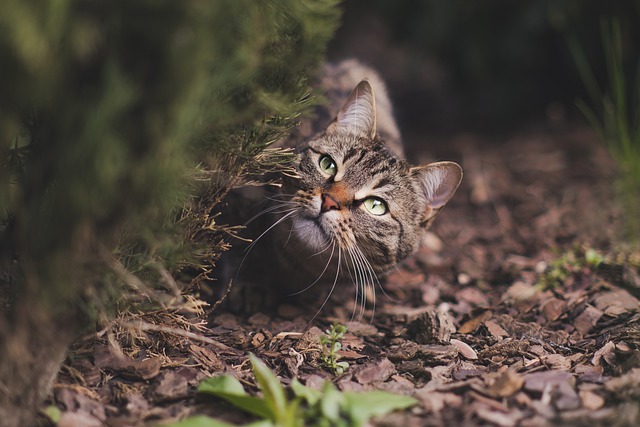Can You Get Rabies from a Cat Scratch?
Most of us are aware that a picnic in the woods or a mountain hike can sometimes lead to dangerous situations due to the wild animals that, if are not out to eat us, usually carry diseases or are infested with parasites such as fleas or ticks that carry transmittable diseases of their own.
Another threat we’re usually prone to pin on wild animals are viruses and viral diseases like the one that makes up the subject of this article, Lyme disease, relapsing fever, tularemia, and many others.
We often forget that these viruses and other parasites don’t spread based on the wild or domestic status of an animal, and that it is possible for any
What is rabies?
You are probably aware that rabies is most commonly carried by foxes, raccoons, dogs and bats. The truth is rabies can infect almost all average-sized to big mammals. Small mammals such as mice, hamsters and even rabbits are almost never infected, but scientists haven’t excluded that possibility yet, so neither should we.
Rabies is a viral infection that attacks the nervous system of the animal, going to the brain, causing acute inflammation of it and eventually leading to coma and death. Although it sometimes take a lot of time before the virus is incubated completely, its subsequent evolution is rapid, death occurring at a very short time after the symptoms start showing.
The symptoms of rabies in humans include fever, nausea, anxiety, a sore throat and cough and a general state of discomfort in the early stage of the virus incubation known as the prodromal stage, later followed by aggression or partial paralysis, muscle spasms, nightmares, a general fear of water, or the production of a large quantity of saliva. A diagnosis of viral encephalitis following a bite or scratch from an animal could also indicate rabies.
The incubation period in an adult individual is 3 to 8 weeks, but in some cases the symptoms have shown as early as two weeks after the bite. Usually, by the time these symptoms appear, it is too late, death being imminent. That’s why prevention is so important, and the victim of a bite or a scratch should immediately follow the prophylactic treatment for rabies.
Rabies can be contacted through the bite of an infected animal, or through an open wound that has come in contact with the saliva of the animal. It is also transmitted if the virus comes in contact with a mucous membrane, such as that of the nose, mouth or eyes. The blood of an infected animal isn’t infectious, though.
Animals that have been infected with rabies will often display a weird behavior, as their neurological system is being attacked. Uncertainty of movements, partial paralysis, a high level of aggression, an abundance of saliva and the classic foaming at the mouth are all strong indicators that an animal has contracted the virus.
What about your cat ?
The incubation period of rabies in cats usually lasts between one and three months, but a lot of cases showed either a slow incubation period of up to a year, or a very fast one, of just one month.
The most common signs a
- loss of appetite;
- hydrophobia;
- ruffled coat;
- fever (nose, tongue and footpads are reddish pink);
- loss of coordination, staggering, stumbling;
- weakness;
- increased vocalization;
- irritability, aggressiveness, biting;
- excitability;
- jaw is dropped;
- excessive salivation, which can be observed even on the chin and front legs.
If you think your
Before you jump to any conclusions, you should take a look at the general environment of the
This last sentence brings us to the main reason to exclude all doubt about contamination, and in the same time, the most efficient method to keep your
As to how do cats get rabies, the answer is the same as for every other animal: through the saliva of an infected animal, usually by bite, or the contact of the saliva with an open wound or a mucous membrane.
Cats who are free to wonder on the outside present a greater risk of getting infected. The risk is even bigger if you live in an area where she has the possibility to run into wild animals, or in an area populated with a big number of stray cats and dogs. That being said, it follows that an indoor
How to protect yourself from getting rabies?
We’ve been through the symptoms that can help you identify an animal that might be infected. Once you observe one or more of these signs, make sure you put enough distance or a strong enough obstacle between yourself and the infected individual. Rabies occurrences should be announced to the authorities as quickly as possible, since the possibility of outbreaks is very big.
If your own
How to protect your cat from getting rabies
As we stated before, the best and most direct way to make sure your
You can start protecting your
There are numerous discussions concerning vaccines in humans and animals. Some accuse vaccines to be the cause of serious illnesses, others just state they’re useless. But if you understand the mechanism of a vaccine, you know that they are not absolute cures, and that mild side effects are perfectly normal.
A vaccine practically teaches the body’s immune system to recognize and fight against certain agents. Given that every immune system is different and depends on the general health of the body, the responses to vaccination vary as well as its effectiveness. That’s why a vaccinated
To get a better understanding about vaccination of your
This insightful book delves into the world of veterinary vaccines, shedding light on potential risks and questioning the validity of annual revaccination practices unsupported by science. Backed by personal stories and numerous studies, it empowers pet owners to make informed decisions about their beloved companions' health and well-being, ensuring their precious four-legged friends receive the care they deserve.
On the other hand, there are some side effects of rabies shots in cats that you need to know about, but their intensity is in most cases very low, and they are most likely to disappear within a few days.
Most common adverse reactions to rabies vaccines in cats are:
- soreness or swelling at the injection site;
- fever;
- loss of appetite;
- lethargy;
- itching;
- sneezing.
If these symptoms persist longer than a few days, or they worsen as time goes by, it’s best to talk to your doctor. Of course, any other symptom, such as vomiting, diarrhea or difficulty breathing are assimilated to severe allergic reactions and are also good reasons to head off to the vet.
Rabies vaccines costs for cats vary quite a lot depending on the state you’re in, the clinic or practitioner you chose, and whether you are giving your
A single rabies vaccine can usually reach a price of around 17$ – 20$, but with just a few dollars more you can get, in most clinics, a full package of vaccines like FVRCP and FeLV, and get your
However, if you can’t afford to pay for multiple vaccines, make sure you get her the ones that are required by law and those recommended in your living area, and take into consideration that once your
Although indirectly, another method of protecting your
What course of action to take in case of a scratch
If you sustained a scratch from a
As we stated before, the symptoms are almost always followed by rapid deterioration and death so you need to be ahead of them. If your diagnosis confirms, you need to bring your
If your
In conclusion
Vaccines and indoor environments for cats can reduce a lot the risk of your precious ball of fur getting infected, but no method is 100% certain to prevent you or your
But before panicking and assuming the worst will come upon you, take the measures we discussed: neuter and vaccinate your







